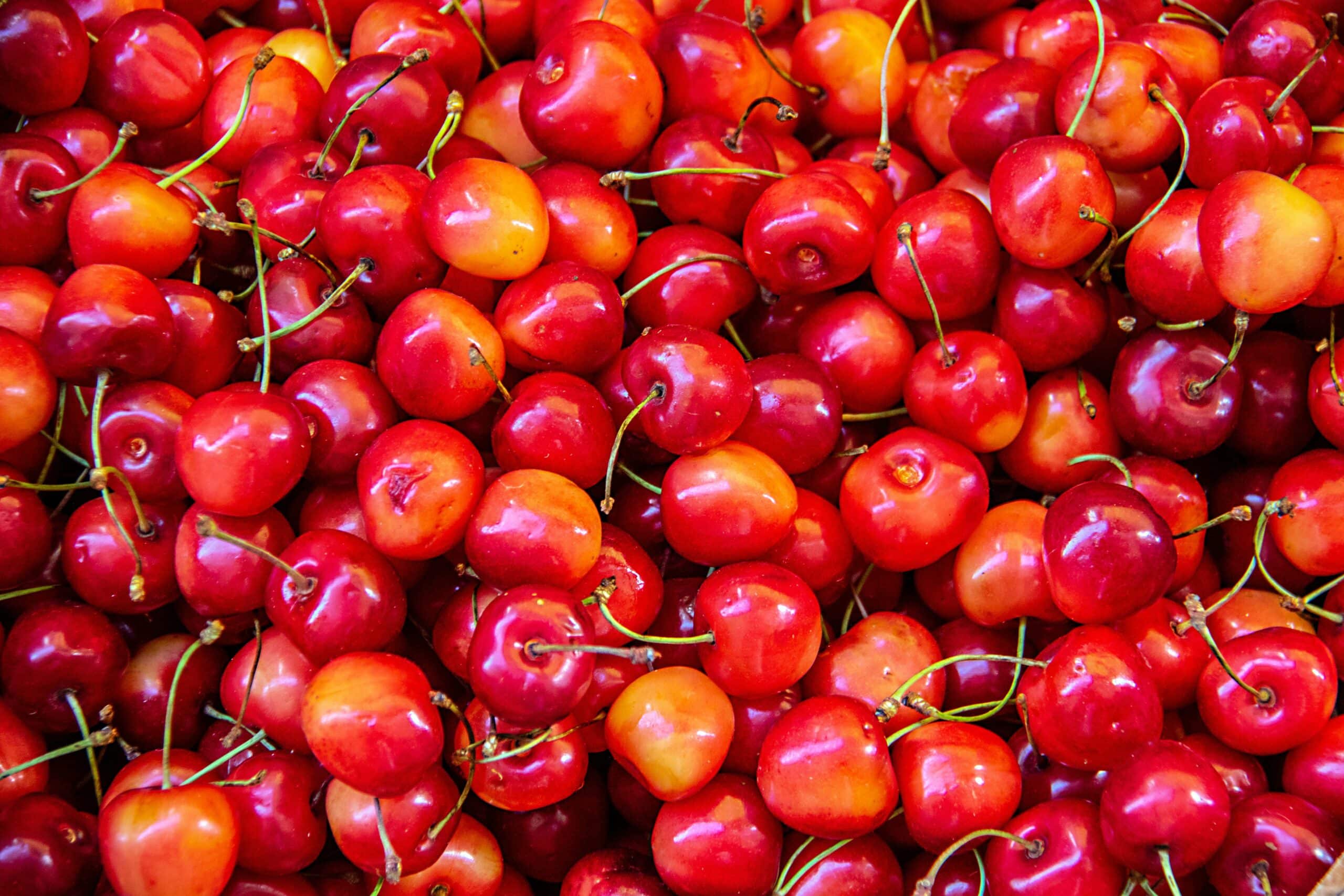Growing ground cherries is a sweet treat for the summer. Unbeknownst to many, these small gems are not actually related to cherries; rather, they are a type of tomatillo. Yet, when harvested and eaten fresh from the vine, their unique flavor can tantalize your taste buds like nothing else. If you’re looking to grow hundreds of ground cherries this season and enjoy them ripe off the vine, look no further than this guide!
Ground cherries may be small, but they pack a powerful punch of flavor. The combination of sweet and tart will make your mouth water as soon as you bite into one. When growing these tasty treats in your garden or backyard, it’s important to know how to nurture them properly so that you can reap the rewards of hundreds of these delicious fruits.
Whether you’re an experienced gardener or just starting out on your green thumb journey, this article will take you step-by-step through everything you need to know about growing ground cherries. From choosing the right location and planting them correctly to harvesting and storing them once ready, we’ll have you gathering handfuls of juicy ground cherries in no time!
Overview Of Ground Cherries
Ground cherries are an unique type of fruit that can be grown at home. Not only are they easy to grow, but the plants also produce hundreds of sweet-tasting fruits that can be eaten raw or used in recipes. Ground cherries have a delicious, almost tropical flavor that’s like a combination of pineapple and strawberry. Plus, they’re packed with nutrients and vitamins.
To get started growing ground cherries, it’s important to choose the right site for planting them. They need full sun and plenty of moisture to thrive, so avoid planting in any area that doesn’t receive direct sunlight throughout the day. Additionally, make sure the soil is well-draining so their roots won’t become waterlogged and rot. It’s also important to keep weeds away from the plants as they can compete for resources and make it more difficult for the ground cherries to flourish.
Once you’ve chosen an ideal location for your ground cherries, you’ll be ready to start planting! Remember to give them plenty of space so each plant will have enough room to develop its full bounty of fruits. If necessary, mulch around each plant to help conserve moisture and discourage weeds from taking over. With proper care and maintenance, you should soon have hundreds of ground cherries growing in your garden!
Choosing A Site For Growing Ground Cherries
Ground cherries are like little umbrellas, casting a canopy of cheery fruits above the soil. Choosing the right site for growing ground cherries is an important step in ensuring your success. With a few simple considerations, you can create the perfect environment for your plants to thrive.
First, it’s important to select a sunny spot that gets at least six hours of direct sunlight per day. Ground cherries love the sun and will produce more fruit if given enough sunshine. Make sure the space is well-drained with no standing water, as wet soil can quickly lead to root rot and other diseases.
Next, consider soil quality when choosing a site for growing ground cherries. The soil should be rich and loamy with plenty of organic matter mixed in for optimal fertility. Ground cherries also prefer slightly acidic soils with a pH between 5.5 and 7.0. If needed, you can adjust your soil’s pH by adding lime or sulfur prior to planting.
With these tips in mind, you’re ready to get started on creating the ideal site for growing ground cherries!
Preparing The Soil For Growing Ground Cherries
Before you can start growing ground cherries, it’s important to get the soil prepared. Approximately 1/3 of any successful garden is in the soil preparation. Here we’ll discuss what needs to be done for a healthy harvest of ground cherries.
To get started, it’s important to make sure that the soil is well-draining and nutrient-rich. You can improve drainage by adding aged compost or aged manure in a 2:1 ratio with existing soil. This will help keep moisture levels balanced and ensure that there’s enough nutrients for the ground cherries to thrive. It’s also important to check your pH levels – ground cherries prefer slightly acidic soil, so take a sample of your dirt and have it tested at your local nursery or agricultural extension office if needed.
Once you’ve checked the pH and made any necessary amendments to improve drainage, it’s time to spread out some fertilizer or organic matter like composted leaves or kitchen scraps around each plant site. This will give them an extra boost as they start their growth cycle. Be sure not to use too much fertilizer though – too many nutrients can burn the plants’ roots!
With everything prepped and ready, you’re now in a position to start planting your ground cherry seedlings or cuttings for an exciting harvest season ahead!
Planting Ground Cherries
Ah, planting ground cherries. Does anything sound more exciting? It’s like a magical quest to the center of your garden, if that center was filled with little orange gems. It’s a daunting task, but fear not! Here I’ll show you how to plant these delicious delights in just four steps.
First, find an area in your garden or yard that gets plenty of sun and has good soil drainage. Make sure you’ve got enough space for the ground cherries to spread out and grow tall — these plants can get up to two feet high! Once you’ve found the perfect spot, dig holes about 6-8 inches deep and 12-18 inches apart.
Next, take your ground cherry seedlings (or seeds) and carefully place them into the holes. If using seedlings, spread their roots out evenly before covering them up with soil. If using seeds, sprinkle them into the hole and cover with a light layer of soil — they should germinate in 5-10 days in warm weather. Finally, give each plant a good drink of water so they can settle into their new home comfortably!
Planting ground cherries can be an adventure – one that yields delicious fruits if done right! With this guide though, you’ll have no trouble setting up your own mini-grove of these tasty treats. Now all that’s left is giving them some love with watering and feeding…
Watering And Feeding Ground Cherries
Watering and feeding ground cherries is an important part of their growth. To ensure that your plants get the best possible environment, you’ll need to provide them with consistent watering and nutrition. During the growing season, water regularly to keep the soil moist but not soggy. You may also want to fertilize during this time to help promote healthy growth. Be sure to use an organic fertilizer that has a balanced ratio of nutrients for best results.
In addition to regular watering and feeding, you should also consider mulching your ground cherries. Mulching helps retain moisture in the soil, which is especially important during dry spells or extreme heat. It can also help prevent weeds from competing with your ground cherries for resources. Compost or shredded leaves are great mulch options to add around your plants.
Mulching is an easy way to give your ground cherries the best chance at thriving and producing delicious fruits for many years to come. With careful attention and proper care, you can enjoy a healthy crop of ground cherries each season!
Mulching Ground Cherries
Ah, the age-old question: how can I mulch my ground cherries? It’s one of those mysteries that have been debated for centuries. After all, it’s not like you can just sprinkle some soil on them and call it a day. Well, it turns out that mulching your ground cherries is easier than you might think! Here’s what you need to know about mulching ground cherries.
Mulching your ground cherries is an important part of keeping them healthy and happy. A thick layer of mulch will help keep the soil moist and prevent weeds from taking over your garden. Plus, it will give your ground cherries a boost of nutrients they need to thrive. If you want to get the most out of your mulching efforts, make sure to use organic materials like straw or wood chips. Not only are these materials good for the environment, but they also provide much-needed nutrients to your plants as they break down over time.
When applying the mulch around your ground cherries, make sure not to pile it too high or too close to the base of the plant. This could create an environment where mold and fungus can thrive, leading to unhealthy plants and poor yields. Instead, spread a thin 2-3 inch layer evenly around each plant and avoid piling it near their stems or leaves. With this simple step, you’ll be well on your way towards healthier ground cherry plants in no time!
By following these steps for proper mulching techniques, you’ll be able to enjoy bountiful harvests from your ground cherry plants year after year without worrying about weeds or fungal diseases destroying everything in sight. So don’t wait any longer – start mulching away and watch those delicious fruits start rolling in!
Controlling Weeds Around Ground Cherries
While growing ground cherries may seem like a difficult endeavor, the reality is that with a few tips and tricks it can be quite straightforward. Controlling weeds around ground cherries is essential to getting the best possible yields. This isn’t as hard as it sounds, though. Let’s take a look at how to manage these pesky plants.
The first step in controlling weeds around ground cherries is to make sure they are planted in an area with good soil quality and few other plants that compete for nutrients or light. If you’re planting them in an existing garden bed, then removing any weeds before planting can help you get a head start on keeping your ground cherry patch weed-free. Additionally, adding mulch around the plants can help keep weed growth down by blocking sunlight from reaching the soil surface.
Finally, hand weeding and hoeing can be effective for dealing with smaller patches of weeds around your ground cherries. You may also want to consider using herbicides if needed; just make sure to read labels carefully and follow directions as specified by the manufacturer so that you don’t end up harming your crop instead of helping it! From here, staking ground cherries will ensure that their delicate fruits remain off the soil surface and away from pests and diseases.
Staking Ground Cherries
Growing ground cherries is a rewarding experience, much like watching a garden bloom. However, it is important to take certain steps to ensure that the plants are successful and thrive. One of these critical steps is staking ground cherries.
Staking ground cherries provides them with support as they grow and can help prevent damage from strong winds or heavy rains. You will need to use stakes that are taller than the plant and provide enough stability for the plant’s branches. Once you have the stake in place, you can attach the stems of your ground cherry plants gently with twine or string. This will help to keep them upright and secure as they grow more vigorous during the season.
It is also important to check on your staked plants regularly to make sure they are still secure and not being damaged by pests or disease. Make sure that you don’t leave too much slack on the twine, as this can cause damage to the stems over time. Taking these precautionary steps will help guarantee that your ground cherry plants reach their full potential!
Protecting Ground Cherries From Pests And Diseases
Growing ground cherries is like a balancing act between protecting them from pests and diseases, and harvesting the fruits. It can be tricky to get it just right, but with proper care and attention you can ensure a successful crop.
Pests and diseases are always lurking around your garden, ready to destroy your hard work in an instant. To prevent this, start by making sure that you have the right conditions for your ground cherries. Choose a spot that has excellent drainage and plenty of sun exposure. Make sure to water them regularly – too much or too little will both cause problems.
To guard against disease, remove any dead or diseased plants immediately before they spread to the rest of your crop. And keep an eye out for pests like aphids or whiteflies – if you see any, spray them off with a hose or use an insecticidal soap. Taking these steps will go a long way towards keeping your precious ground cherries safe until harvest time.
Harvesting Ground Cherries
Reaping the rewards of a labor of love, harvesting ground cherries is a bittersweet moment. After you have carefully nurtured and tended to your crop, it is time to reap what you have sown. With that in mind, here are some tips for harvesting ground cherries.
When it comes to harvesting ground cherries, timing is everything. Look for when the papery husks turn brown and begin to dry out; this is the most ideal time for picking. You can also determine if they’re ready by shaking the plant gently – if the husks rattle, then they are ripe for harvest. Be sure not to let them over-ripen on the vine or else you’ll miss out on their sweet flavor!
Finally, once you’ve picked your ground cherries, be sure to handle them with care. They are delicate fruits and can be easily bruised or damaged if handled too roughly – so take extra caution when gathering them up off the vine. With all these tips in mind, you should be able to enjoy a successful harvest of your delicious crop!
Storing Ground Cherries
Storing sweet ground cherries can seem like a daunting task. However, with the proper precautions, you can easily keep your fresh-picked fruit crisp and delicious for weeks. Sorting and saving the succulent morsels is simple to do with a few steps.
To start, select only mature ground cherries that are ripe and ready to eat. Avoid those with any discoloration or soft spots as they will not store well. Once you have the right fruit, spread it out on a paper towel in a single layer and allow it to dry for several hours. This will help prevent them from sticking together when placed in storage containers.
Next, gather up your chosen cherries and place them into airtight plastic containers or zip-top bags. With this method, they should stay fresh for several weeks if kept in the refrigerator or cool garage. Alternatively, you can freeze them if you want to keep them for longer periods of time. Whichever way you choose, make sure to label your containers clearly so that you know what is inside each one! Now your ground cherries are safely stored away until it’s time to enjoy their sweet flavor again!
Propagating Ground Cherries
Once a ground cherry plant has been established, propagating it can allow for more plants to be grown. Propagation is most successful when done with stem cuttings, which are typically taken from the plant in late summer or early autumn. The cutting should be about six inches long and have at least three sets of leaves. Once these cuttings have been taken, they should be placed in moist soil and then kept damp until roots begin to form; this could take anywhere from two weeks to several months.
When propagating ground cherries, patience is key! If the cutting appears to be wilting, water it immediately; too much water can cause root rot, so only do this if absolutely necessary. It’s also important to keep the plant in a warm environment; cold temperatures will prevent the cuttings from rooting properly.
Propagating ground cherries may take some time and effort, but with proper care and attention, it can be a rewarding experience. With a little bit of luck and some extra TLC, you’ll soon have plenty of new plants ready to harvest!
Tips For Growing Ground Cherries
Incredibly, it’s possible to grow hundreds of ground cherries! With a little bit of knowledge and effort, anyone can learn how to cultivate this unique fruit. In this article, we’ll explore the tips and tricks for cultivating ground cherries successfully.
Firstly, it’s important to understand the ideal conditions needed for growing ground cherries. Planting them in well-drained soil in an area that receives full sun is essential – you need their roots to be able to access oxygen and nutrients easily. Additionally, make sure that your soil has a pH level between 6.0 and 7.5; if not, you’ll need to adjust it accordingly.
Another key factor is watering – ground cherries need plenty of water during their growth phase but don’t overwater them or else they could develop root rot or other diseases due to excess moisture levels. Be sure to check the soil frequently with a moisture meter so you know when they need more water. Additionally, fertilizer can help them thrive; consider using a balanced liquid fertilizer every couple of weeks once they start bearing fruit.
These simple steps can help you get the most out of growing ground cherries – now let’s take a look at troubleshooting any potential issues that could arise while cultivating these delicious fruits!
Troubleshooting Growing Ground Cherries
Rattling off the challenges that arise when growing ground cherries can be daunting. Alliteration aside, let us take a look at the 14th step in our journey to cultivating hundreds of these little fruits: troubleshooting.
Though with proper care and attention, few issues will arise, things do not always go as planned. Having knowledge on what to do when problems occur is key. For instance, pests are known to munch away at the fruits and leaves; a mix of insecticidal soap and water can help mitigate this issue.
Additionally, too much or too little moisture can cause stunted growth and lack of production. To help combat this, make sure to keep the soil evenly moist while avoiding over-watering; using mulch around the plants is often helpful in retaining moisture levels.
As we move forward into understanding the benefits of growing ground cherries, it’s important to remember that taking preventative measures is key in getting the most out of your plants.
Benefits Of Growing Ground Cherries
Growing ground cherries can be a great way to add something unique to your garden. Not only are they tasty, but they also offer a variety of benefits that make them an excellent addition. Here’s what you need to know about the many advantages of cultivating ground cherries.
First off, ground cherries are easy to care for and don’t require much in the way of maintenance or attention. Once planted, these fruits will take care of themselves with minimal input from you. In addition, since the fruits hang from their stems, it makes them easy to harvest without having to bend over or strain yourself as you would with other fruit-bearing plants.
Finally, ground cherries have a long shelf life after being picked and can remain edible for several weeks if stored properly. This means that you can stock up on your harvest and enjoy them for quite some time! Plus, they’re incredibly versatile and can be enjoyed in sweet recipes such as pies and jams or savory dishes like salads and soups.
With all these advantages, why not give growing ground cherries a try? Not only will it add flavor and nutrition to your meals but it’ll also provide natural beauty to your outdoor space!
Frequently Asked Questions
What Type Of Ground Cherries Are Best For Growing In My Area?
When it comes to growing ground cherries, the possibilities are nearly endless. It’s like having a sweet and juicy garden of your own! But before you can start plucking these little berries off the vine, there’s one important question that needs to be answered: what type of ground cherries are best for growing in my area?
The answer depends on the climate in which you live. If you live in a temperate climate where winters are mild, then you may want to consider some varieties of Physalis ixocarpa or Physalis pruinosa, both of which love warm summers and cool nights. In areas with more extreme temperatures, Physalis pubescens is a great option since it can withstand both high heat and cold temperatures.
No matter what type of ground cherry you choose to grow, make sure to provide plenty of water and fertilizer throughout the season. Regular pruning will also keep your plants from becoming overly tall or sprawling out too much. With proper care, these delectable fruits will have no problem flourishing in your garden!
How Can I Protect Ground Cherries From Birds And Other Animals?
Protecting ground cherries from birds and other animals can be a challenge, especially if you’re growing them in an area with a large population of wildlife. To ensure your ground cherries are safe, it’s important to take the necessary precautions. There are several steps you can take to make sure your plants are protected.
First and foremost, consider fencing or netting around your garden to keep out unwanted visitors. You can also place mesh bags over individual plants that may be more attractive to animals, such as ground cherries which have an appealing sweet smell. Finally, use natural repellents such as garlic spray or cayenne pepper flakes near the plants to discourage animals from coming too close.
It’s also beneficial to watch out for any signs of animal activity in your garden and take action immediately if you notice any damage. Regularly inspect the plants and remove any fallen fruit that has been touched by wildlife so that the cherries can ripen on their own without interference. Additionally, keeping the area clean by removing weeds and debris will help deter animals from entering your garden in search of food.
By taking these steps, you can confidently protect your ground cherries from birds and other animals so they have a chance to thrive and produce delicious fruit for years to come.
How Often Should I Water Ground Cherries?
When it comes to growing ground cherries, one of the most important factors to consider is how often you should water them. This is especially important as they are sensitive to both too little and too much water. Knowing how often to water your ground cherries can help ensure that they grow healthily and produce plenty of fruit.
If you’re wondering how often you should be watering ground cherries, the answer will depend on the climate and temperature in your area. Generally speaking, they should be watered regularly during the summer months when temperatures are higher and rainfall is less frequent. During this period, aim to give them a good soak once a week or every two weeks depending on the conditions in your garden. However, if it’s particularly hot and dry in your area, you may need to increase this frequency slightly. On the other hand, during cooler periods with more regular rainfall, you can reduce the amount of water given to your ground cherries.
It’s also important to remember that soil drainage is an essential factor when it comes to watering ground cherries. If soil drainage is poor in your garden then you’ll need to take extra care not to overwater as this could lead to root rot in plants. In such cases, aim for light but more frequent watering rather than deep but infrequent soaking – this will help ensure that ground cherries receive enough moisture without becoming waterlogged. With all this in mind, by following these guidelines you should have no problem ensuring that your ground cherries get all the attention they need!
Can I Propagate Ground Cherries From Cuttings?
Have you ever wondered if it’s possible to propagate ground cherries from cuttings? As a gardener, you know that some vegetables are easily propagated from cuttings or seeds and others may require more effort. With ground cherries, it is possible to propagate them from cuttings. So, how do you go about doing that?
Propagating ground cherries from cuttings is a relatively simple process. The best time to take your cutting is when the seedling is at least a few inches tall. You’ll want to make sure that the cutting has at least two leaves on it since the leaves will provide energy for the plant while it establishes itself in its new environment. Once you have taken the cutting, place it in moist soil and cover with plastic wrap or a dome-like cover to help retain moisture and humidity. Make sure that your soil is damp but not soggy and change out the plastic wrap every few days to keep the humidity level high. Place the cutting in an area with indirect sunlight and keep an eye on moisture levels – once your cutting has taken root, water only when necessary.
Ground cherries can be propagated from cuttings with just a bit of patience and planning! With the right care and attention, you can have hundreds of ground cherry plants in no time! To ensure success, make sure your soil is damp but not soggy, provide plenty of indirect sunlight, keep an eye on moisture levels, and use a dome or plastic wrap to help retain humidity as needed. With these tips in mind, you’ll have yourself some delicious ground cherries in no time!
How Do I Know When Ground Cherries Are Ripe And Ready To Be Harvested?
Knowing when ground cherries are ripe and ready to be harvested is key for a successful crop. When the fruits are still green, they need more time on the vine before being picked. If you wait until the husk starts to turn brown and papery, it’s usually a sign that the cherries are ready. The fruit inside should be sweet and juicy; if it’s not, leave them for a few more days.
Another way to tell if ground cherries are ready to be harvested is by giving the husks a gentle tug. If they come off easily, then that means they’re ripe and ready to be picked. Be sure not to pull too hard though or you’ll risk damaging the plant or hurting yourself in the process!
Harvesting ground cherries at their peak ripeness ensures they taste their best and have maximum sweetness. This will also help maximize your yield so you get as many delicious fruits as possible from your plants. Don’t forget to regularly check on your crops throughout the growing season and enjoy all those sweet rewards!
Conclusion
Ground cherries are a unique and delicious fruit that can bring a great harvest to any garden. Growing them is relatively easy and with the right knowledge, anyone can have hundreds of ground cherries in their garden. With the right preparation, they can be protected from birds and other animals, and with proper watering schedules they can thrive in any area. It’s also possible to propagate ground cherries from cuttings, so if you want to expand your crop you don’t need to start all over again.
Harvesting ground cherries is very simple; all you need to do is wait for them to turn yellow-orange in color and fall off the plant. On average, each plant produces around 100 fruits per year, meaning that it’s possible to get hundreds of these sweet little fruits from just one plant! Not only are ground cherries tasty but they also contain high levels of vitamins A and C making them a nutritious addition to your diet as well.
Ground cherries are an amazing fruit that brings joy not only in flavor but also in how easy it is to grow them. With a bit of patience and care, anyone can enjoy hundreds of these special fruits without too much effort!





























